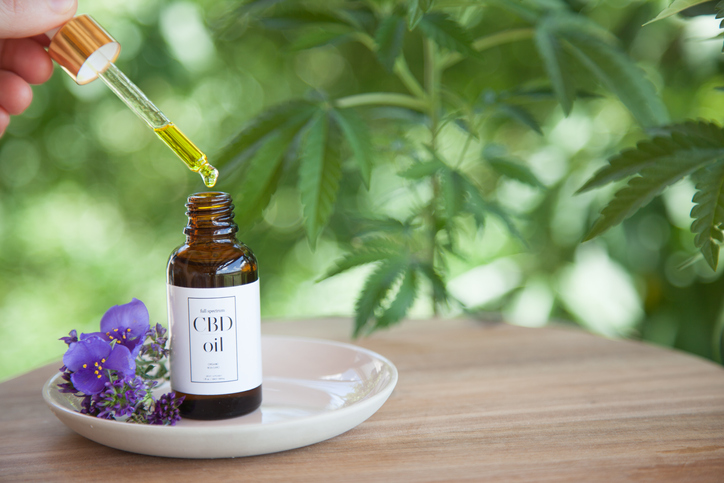We all have moments of aches and pains, some more debilitating than others. When discomfort strikes, many people turn to over-the-counter (OTC) pharmaceuticals for relief. However, these are often short-term solutions for larger issues. And, if those larger problems aren’t alleviated by OTC offerings, patients may feel like their only option is to turn to prescription opioids to manage the pain.
This can be a damaging cycle, and the effects of opioid abuse in the U.S. are well documented. For those searching for a more natural method of handling pain, there are many effective drug-free options available.
Understanding the Opioid Crisis
In the late 1990s, pharmaceutical companies claimed that patients could not become addicted to prescription opioids, so the medical community felt safe increasing their number of opioid prescriptions.
Soon, though, opioid over prescription and misuse became the norm, and it was clear that the drugs were highly addictive and came with significant risks, including overdose and withdrawal symptoms. By 2017, the Department of Health and Human Services classified the opioid crisis as a public health emergency.
According to the National Institute of Health, there are more than three million U.S. citizens who have suffered or currently suffer from opioid use disorder (OUD), and more than 130 people in the U.S. die every day from opioid overdose.
Because of these alarming statistics, many are turning to alternative pain relief methods, specifically ones that are naturally derived.
Natural Alternatives to Prescription Painkillers
Herbs, spices, and other alternative methods have been used for pain relief for hundreds of years. Some that have withstood the test of time and are recommended today include exercise, massage therapy, turmeric, chiropractic care, and CBD.
Exercise: Done regularly, cardio and strength training can reduce inflammation, improve mobility, and release endorphins, which act as natural painkillers in the body. If you want something that’s easy on the joints, yoga is a highly recommended discipline. In fact, the National Center for Complementary and Integrated Health states that yoga may relieve and prevent lower back and neck pain.
Massage therapy: A therapeutic massage is relaxing, of course, but that relaxation may also alleviate pains in muscles, tendons, and joints. It can also reduce stress, combat anxiety, and stimulate certain nerve fibers that prevent pain messages from being sent to and from the brain.
Turmeric: This yellow spice not only has a unique flavor, it contains an antioxidant called curcumin, which helps protect the body from free radicals that can damage cells. It’s also been known to ease swelling and reduce inflammation. It’s used to treat many conditions, namely issues of the stomach, psoriasis, and inflammation caused by conditions like osteoarthritis.
Chiropractic care: Chiropractors focus on the relationship between the spine and the nervous system, and how misalignments in the spine, known as subluxations, can contribute to various health issues, including chronic pain. Through manual adjustments and manipulations, chiropractors correct these misalignments, which, in turn, alleviates pressure on nerves and surrounding tissues. When the spine is properly aligned, and nerves and tissues are more relaxed, it can aid in overall mobility and reduce pain.
CBD: CBD, which is short for cannabidiol, is a non-psychoactive compound found in the cannabis plant. Unlike its cousin, THC (tetrahydrocannabinol), CBD does not produce the “high” associated with marijuana use. Instead, it interacts with the endocannabinoid system in our bodies, which plays a crucial role in regulating various physiological processes, including pain perception. CBD is typically found as an oil but can also be sold as an extract or vaporized liquid. Laws regarding CBD vary by state, but Washington chiropractors may employ topical CBD in their care.
How CBD Works for Pain Management
Research shows that most people – around 62% — who use CBD for a medical condition are treating chronic pain, arthritis, joint pain, and anxiety. The pain-relieving effects of CBD are as follows:
Reduces inflammation: CBD has been shown to reduce inflammation in various studies. Inflammation is a common source of pain, especially in conditions like arthritis and muscle injuries.
Alters pain perception: CBD influences how our brain perceives pain signals, making them less intense. This can lead to a reduction in the overall sensation of pain.
Enhances natural painkillers: CBD may also boost the body’s natural pain-relieving mechanisms by increasing the levels of endorphins and serotonin, which contribute to mood and pain regulation.
Improves mood and sleep: Chronic pain can significantly impact daily life, relationships, work, and mental health. CBD may alleviate anxiety, depression, insomnia, and fatigue associated with chronic pain, promoting relaxation and better sleep.
Safety Considerations
Unlike opioids, CBD is non-addictive and has a low risk of overdose. However, it’s important to talk to a healthcare professional before starting any new pain medication treatment or regimen, especially if you are currently taking prescription medications or have underlying medical conditions. Also, select CBD products that are high quality and come from a reputable manufacturer. State chiropractic associations, such as the WSCA, can direct you to those reputable manufacturers.
Conclusion
The opioid crisis has underscored the urgent need for non-addictive methods of pain management. CBD, with its potential to reduce inflammation, modulate pain perception, and enhance natural painkillers, offers a promising alternative.
While more research is needed to fully understand CBD’s mechanisms and its efficacy in various pain conditions, its safety profile and growing body of anecdotal evidence make it a compelling option for those seeking non-opioid pain relief.
As always, consult with a healthcare professional to determine the best approach to managing your pain effectively and safely.

